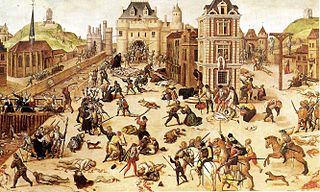The 22-year-old King cried, “Kill them! Kill them all!” The Jesuits locked the gates to the city so that nobody could leave, and the Catholic soldiers let loose on the city.
The year was 1572. Five thousand Protestants had been in Paris, and fewer than five hundred survived. They were stabbed, clubbed, drowned, thrown from windows. The massacre started as a religious frenzy, but spread to a kind of free-for-all: an excuse to kill anyone that seemed scary, unpleasant, or Other. The killing went on for three days. The dead filled the streets. It spread across all of France, and when all was said and done, as many as thirty thousand Protestants were murdered.
History is filled with moments like these, and you can read about them extensively in the history books. Moments when humanity seems to go inexplicably crazy. The most recent example in our collective cultural memory is the Nazis, and it is common for them to be described as “evil incarnate” and “inhuman.”
But of course they were human. And they were not unique. The pogrom has always been in the repertoire of human nature.
What I wonder about, though, is the moments that lead up to the pogrom. These are the scenes that are less often repeated in the history books. What did the world look like in the days and years before humanity began to act inhuman?
I wonder this when I read headlines like, “Man stabbed after admitting to being Muslim.” I wonder this when I read headlines like, “Man arrested for pissing in a Mosque.”
What does it feel like to live in the moments before the pogrom? The leaders are the ones that make it into the history books (“Kill them all!”), but it is an entire society, a culture of fear and hatred and judgment, that sets the stage.


